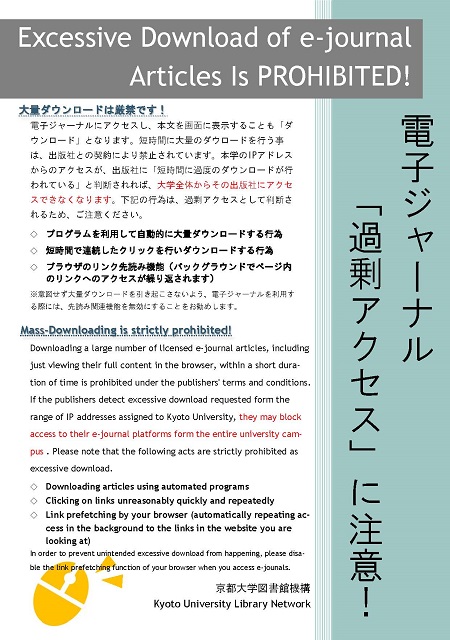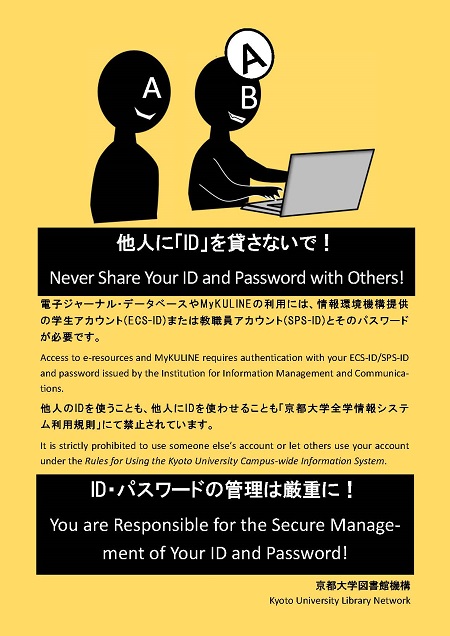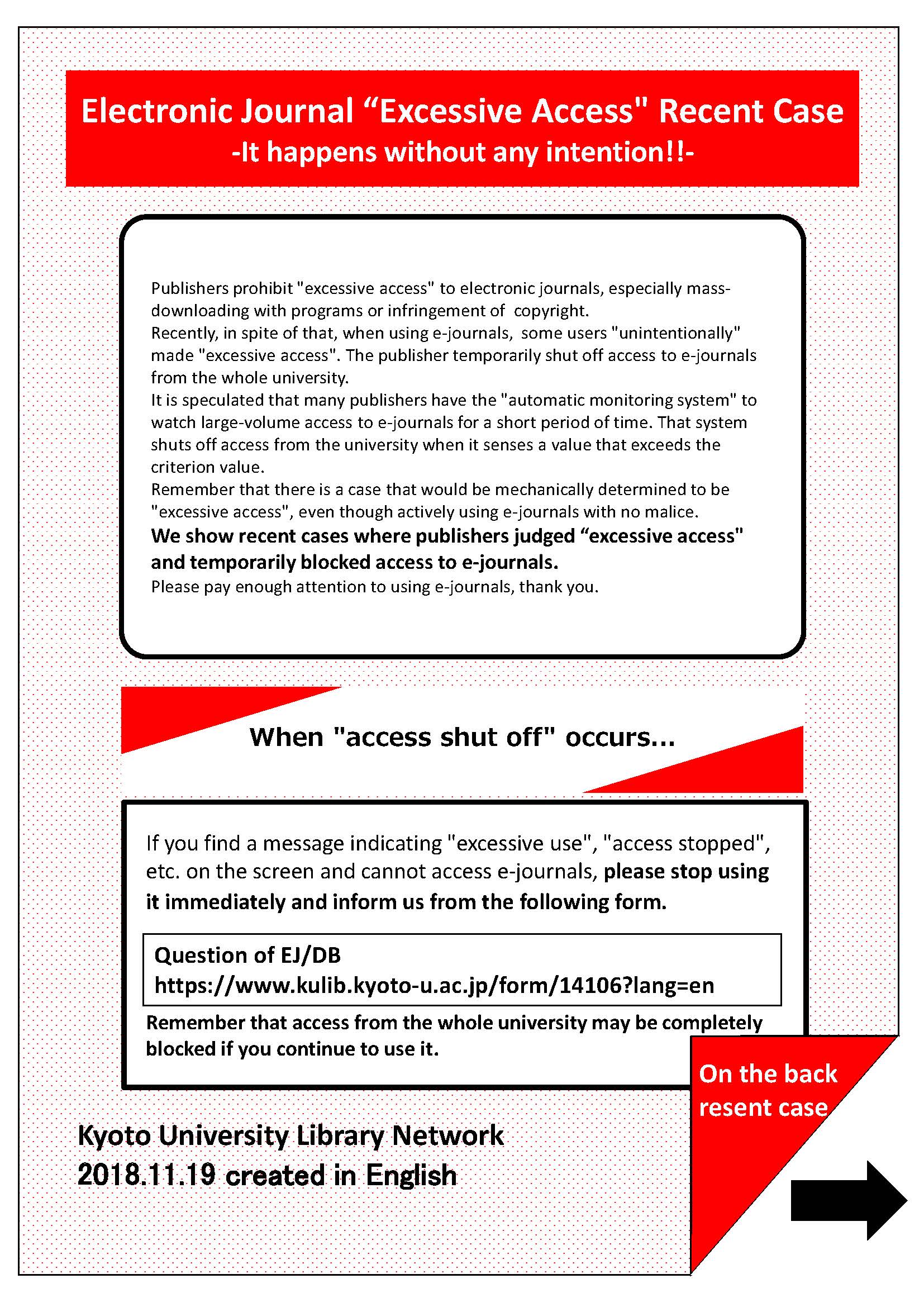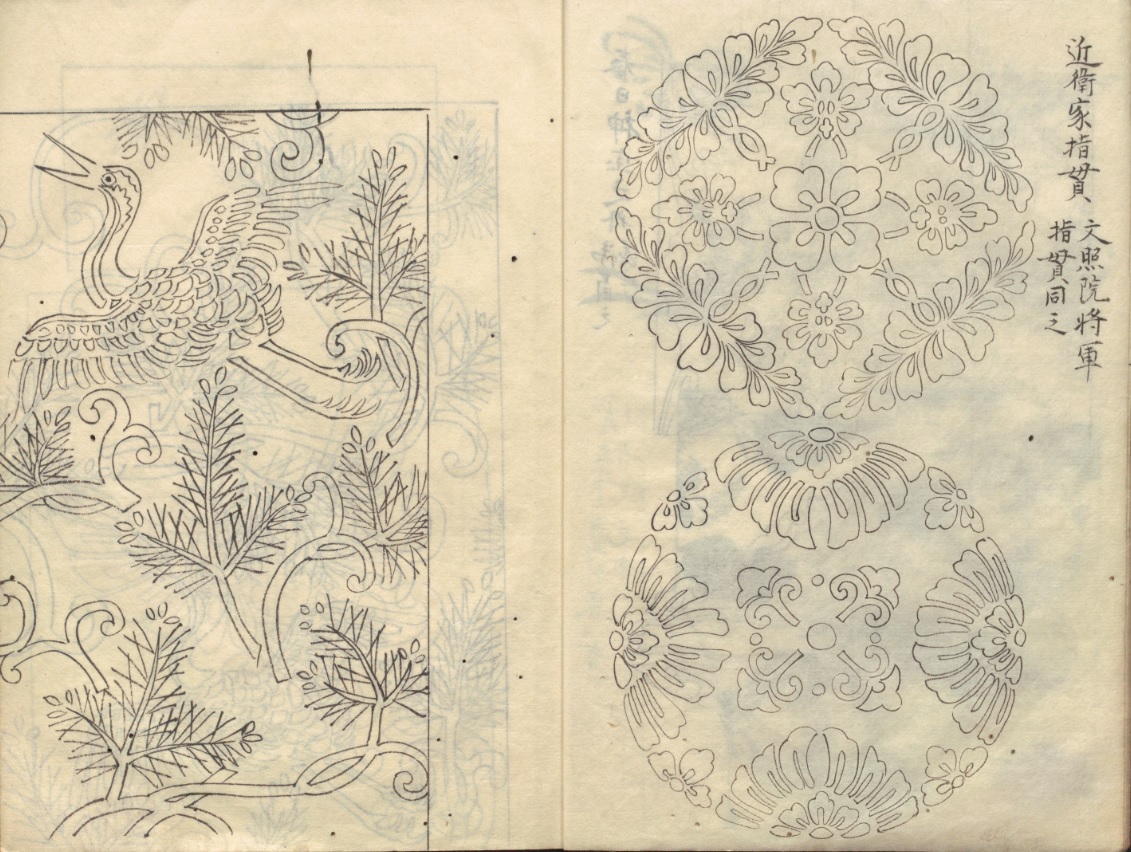[Library Network] Kyoto University Rare Materials Digital Archive: Important Cultural Property "Dainihonshi hensan kiroku" vol.6-10, 21-50 (G.S. Letters) newly released
The Graduate School of Letters of Kyoto University and the Kyoto University Museum have been carrying out the restoration and digitization of an important cultural property Dainihonshi hensan kiroku held by the Graduate School of Letters since academic year 2017. One thousand five hundred six images of the restored volumes 6-10, 21-50 are now available in Kyoto University Rare Materials Digital Archive.
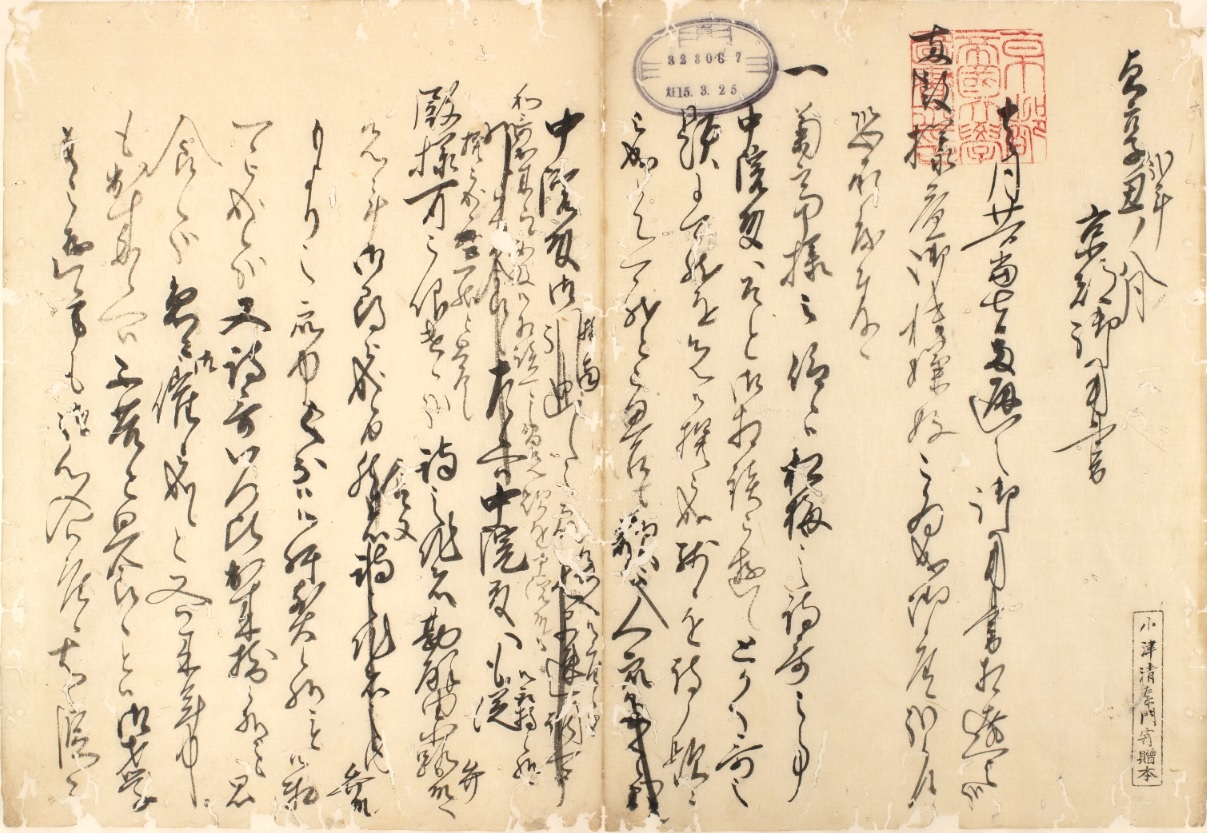
▼Important Cultural Property - Dainihonshi hensan kiroku (G.S. Letters)
Dainihonshi hensan kiroku (大日本史編纂記録) is a collection of more than 6,000 letters (copies) exchanged between Shokokan (彰考館; Mito Domain’s office for history compilation) in Mito (currently in Ibaraki Prefecture) and Edo (currently Tokyo) and their Kyoto office regarding the compilation of Dainihonshi (*1) by Tokugawa Mitsukuni (徳川光圀; 1628-1701). A total of 42,810 people and organizations and 15,159 historical records and literature works are mentioned in the letters and the content covers a wide range of aspects of the time, such as history, literature, Confucianism and Japanese classical literature, as well as the publishing culture during the Genroku Period, which makes this rare material a first-class historical record.
The rare material, before being restored, consisted of 248 volumes of about 10,000 sheets (one sheet folded in half to form a pouch makes two pages) in the form of fukuro-toji yotsume-toji (袋綴四つ目綴装) with sheets of papers folded at the fore edge and sewn at the back edge at four points. However, the rebinding and restoration done to the material during the Edo period were not appropriate to secure its long-term preservation; they also made it impossible to read the majority of the volumes without damaging them, because the text near the back edge was sewn inside the spine. Therefore, a restoration project was launched in academic year 2018, with a plan to restore first 20 volumes funded by the Sumitomo Foundation. The Graduate School of Letters has also set up Kyoto University Fund for the restoration of its library collection and the Kyoto University Museum acquired the university's special budget for this project in 2018.
Each volume of Dainihonshi hensan kiroku is to be released on the Internet through Kyoto University Rare Materials Digital Archive upon the completion of restoration and digitization processes. As of March 27, 2020, the Digital Archive provides 1,365,106 images of 17,638 titles.
Karger: KU members can publish Open Access articles free of charge
Kyoto University members are entitled to publish their manuscripts open access in Karger journals at no additional cost if they meet the following requirements.
Application period: April 1, 2020 - March 31, 2021 *Articles applied outside this period are not eligible. *Kyoto University is issued with a limited number of vouchers for open access articles.
Eligible authors: An individual employed by Kyoto University or a student enrolled at Kyoto University who is also Corresponding author. *If you are not the corresponding author but the first author or the co-author, you are not eligible.
For more information about the limited number of vouchers and how to apply for the vouchers, please visit to the following web page. The Kyoto University Library Network : Discounts for Open Access Publishing > Publishers > Karger https://www.kulib.kyoto-u.ac.jp/content0/13089?lang=en#Karger [Kyoto University Library Electronic Resources Team]
[Library Network] Conditions of Use and Licensing Restrictions for E-Resources
Use of electronic resources including databases, e-journals and e-books subscribed by Kyoto University is subject to copyright laws and licence agreements.
The licences generally prohibit the following uses:
- Systematic and programmatic download
- Usage beyond the private purpose
- Reproducing and distributing
Violation of the licence agreements may result in the suspension of access to e-resources for the whole University.
There have been frequent recent occurrences of users unintentionally downloading or accessing large volumes of data using pre-read browser functions. Pre-read browser functions continually access links within pages in the background while pages are being viewed. As a result of this, large volume data downloads or large volume access of which the user is unaware may occur, even if the user intends to use electronic journals in the standard way. We request your cooperation in disabling these functions by making the below changes to your browser settings.
Flier
- Electronic Journal "Excessive Access" Recent Case: It happens without any intention!!(PDF)[Flier]
Ref.
- E-Journals & E-Books List
- Flier: E-Journals : Access and Use Restrictions (PDF) [English] [Chinese] [Korean] [Japanese]
- Guide to E-Journal and Database Authentication System
- EJ/DB Authentication System FAQ [JPN]
- Warning: Large volume access using pre-read browser functions
[Kyoto University Library Network]
Solved:【Access Trouble】Medical Online
Trouble had been solved (2020.3.24 16:00)
Medical online is not available.
[Medical Library]
[Library Network] Kyoto University Rare Materials Digital Archive: Main Library’s 289 items from Nakanoin Collection and Konoe Collection have been released
A total of 289 items – 278 items from Nakanoin Collection and 11 items from Konoe Collection held by the Main Library – have been newly digitized and released. Kyoto University Rare Materials Digital Archive provides 1,363,600 images of 17,638 titles as of March 19, 2020.
Nakanoin Collection was formerly owned by Count Michinori Nakanoin (1856-1925), from whom former President of Sumitomo Company Kichizaemon Sumitomo, who was related to the Nakanoin Family by marriage, purchased 1,041 books of the collection and donated them to Kyoto University Library in 1923. The count’s family tree goes back to Murakami-Genji and in particular, the 14th family head Michikatsu (1558-1610) and Michimura (1588-1653) contributed to the development of Japanese literature. Most items of this collection are handwritten by the family members themselves or copies by hand of such manuscripts, as well as books owned by the Nakai family. They include annotations to imperial-commissioned poem anthologies, Genji Monogatari and Ise Monogatari, diaries and memoranda on ceremonies and rituals in the Imperial court. These are valuable primary sources in the research of the situations in the Imperial court and ordinary people’s lives at the time.
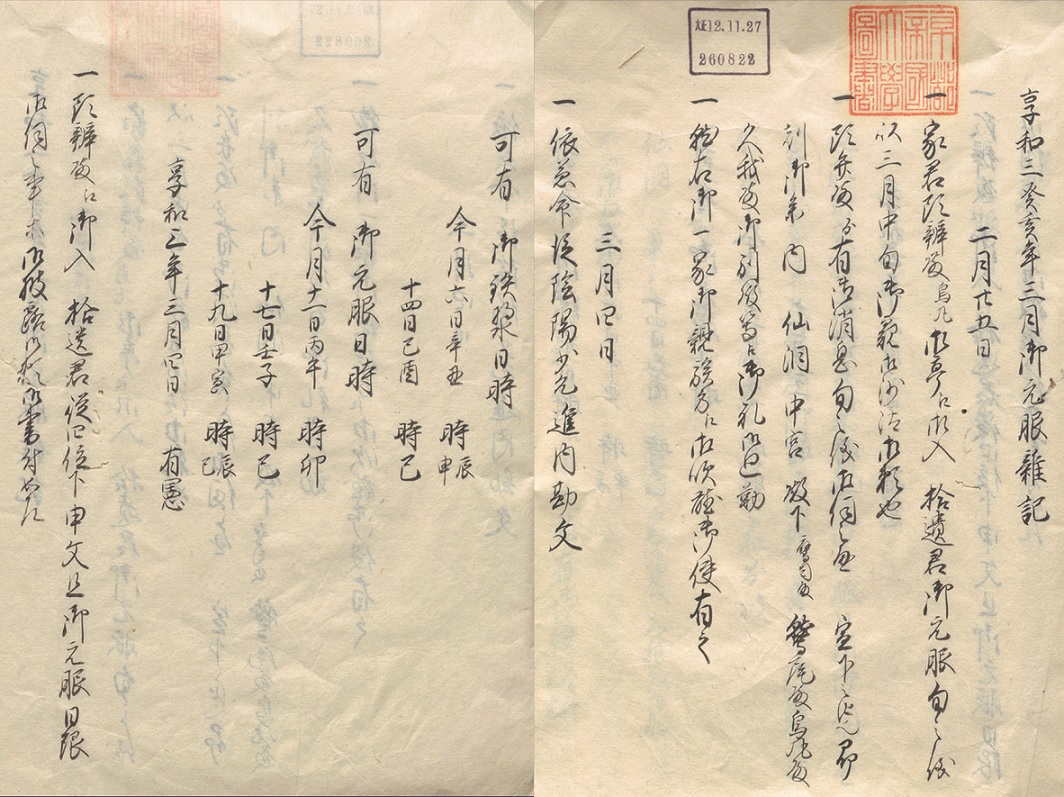
The original Konoe Collection was formerly held by the Konoe Family, the leading family of the five regent houses. The Konoe Family had deposited books that had been passed down through the family with Kyoto University on several occasions since 1900. In 1938, however, in order to secure the preservation of this precious collection, a public interest incorporated foundation, Yomei Bunko was founded and the books in care of Kyoto University until then were returned to the Konoe Family and were then incorporated into Yomei Bunko. In this process, 3,150 volumes of 219 titles among the previously deposited books were donated to Kyoto University Main Library and became the library collection currently called Konoe Collection. The major part of the collection is Chinese classics including renowned “荘子鬳齋口義”, “欒城集” and "雲南通志", but it also includes old manuscript copies of Utsuho Monogatari, Ochikubo Monogatari and Okagami, as well as Kokatsuji-han (old type editions) created in Japan during the former half of the 17th century such as “医学入門”, “古今医鑑”.
The Main Library of Kyoto University takes part as a core university in the "Project to Build an International Collaborative Research Network for Pre-modern Japanese Texts (NIJL-NW project)" led by the National Institute of Japanese Literature, which supports the digitization of the 289 books released this time.
